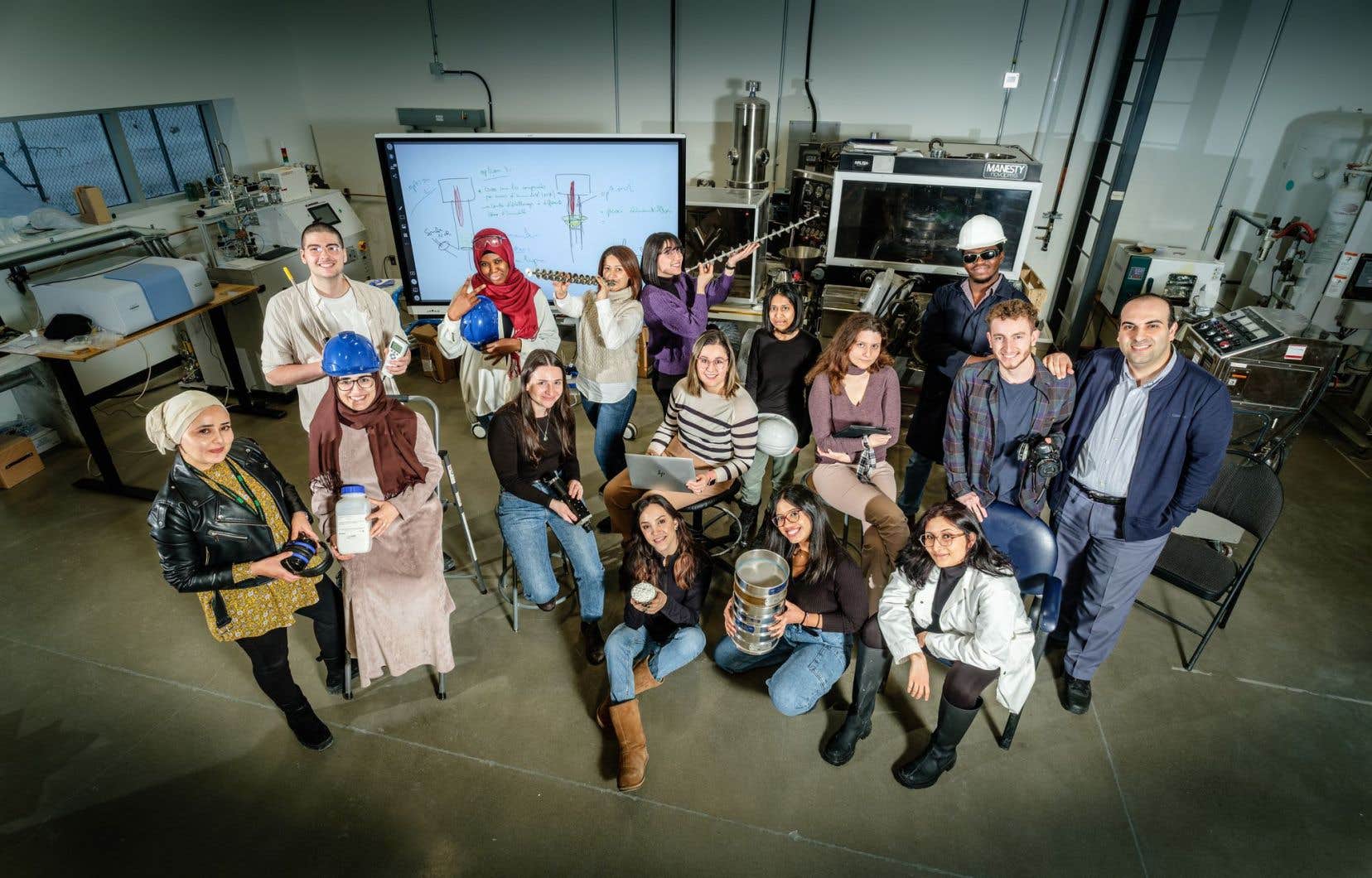This text is part of the special Women’s Leadership booklet
The laboratory of the Research Group on Technologies and Processes at the University of Sherbrooke has a majority of women. A textbook case for a sector more often prized by men. Levers to support the recruitment of female science students exist and are proving their worth.
“If female students see how diverse the teams are and that there are women, it will arouse their curiosity and make them realize that science is not necessarily a male field. It is from this observation that Professor Inès Esma Achouri, holder of the Canada Research Chair in Process Intensification for Advanced Catalysts and Sustainable Energy, at the University of Sherbrooke, started to promote her laboratory.
An example in the middle
In Quebec, women represent only 43% of university graduates in pure and applied sciences, and 23% in engineering. However, a laboratory at the University of Sherbrooke has 85% of women in its workforce, a large majority and a rather rare case. This laboratory, founded many years ago, specializes in processes in general, in the pharmaceutical, chemical or biological fields, and therefore affects different specialties.
If, today, it has a majority of women, it is thanks to the efforts of the University of Sherbrooke, and more particularly of Eve Langelier, holder of the Chair for Women in Science and Engineering in Quebec. The Faculty has implemented several actions to stimulate the enrollment of women, such as conferences, workshops or events. “I am the fruit of their efforts, proudly declares Inès Esma Achouri. It is thanks to the criteria put in place for Equity, Diversity and Inclusion (EDI) that I am where I am today! »
A structural adjustment
To recruit a doctoral graduate, we often look at the years of experience and the number of publications of the candidate. But not everyone has the same life course. “I took two maternity leaves, with preventive withdrawal to limit my exposure to chemicals during my pregnancies. Despite this, in two postdoc years, I published six relevant articles,” says Inès Esma Achouri.
If the EDI criterion had not been applied for the application of Mme Achouri, his profile would have been assessed differently than another candidate. For example, a man who has accumulated more experience and published more articles in a shorter period of time would have been considered better. “It showed that I was as good as all the other candidates,” adds the professor. Thanks to an assessment of her candidacy which took into account her career and her breaks, Inès Esma Achouri was not discriminated against and was selected.
Inspire other students
Not sanctioning the candidates according to the courses is one thing. They still have to want to enroll in scientific programs. On this subject, Inès Esma Achouri is formal: “The representativeness of women is essential. At the time, I didn’t understand why I found the world of engineering unattractive and cold. Looking back, I understand it was because I didn’t see anyone there who looked like me. »
The report Decipher the code. The education of girls and women in science, technology, engineering and mathematics (STEM) published in 2017 by UNESCO states that “the need to belong and identify with the field of study that one has chosen leads to better results and greater commitment, but women find it more difficult to identify with STEM than men, and some feel that their academic identification with STEM is incompatible with their gender identity”.
And, on this fact, Inès Esma Achouri is convinced. “90% of the people who contact me to discuss, ask me for advice, get my opinion, are women, even if we don’t work together. According to her, it is important to know that you will be understood, heard, but also to be reassured and comforted in the choice to pursue a scientific career.
The teacher is confident for the future. “My 10-year-old son’s friends have told me that they want to be engineers, like me, even though they don’t really know what it is yet,” she jokes. The seed is sown and the harvest may one day lead to parity in science.
This special content was produced by the Special Publications team of the Duty, pertaining to marketing. The drafting of Duty did not take part.
